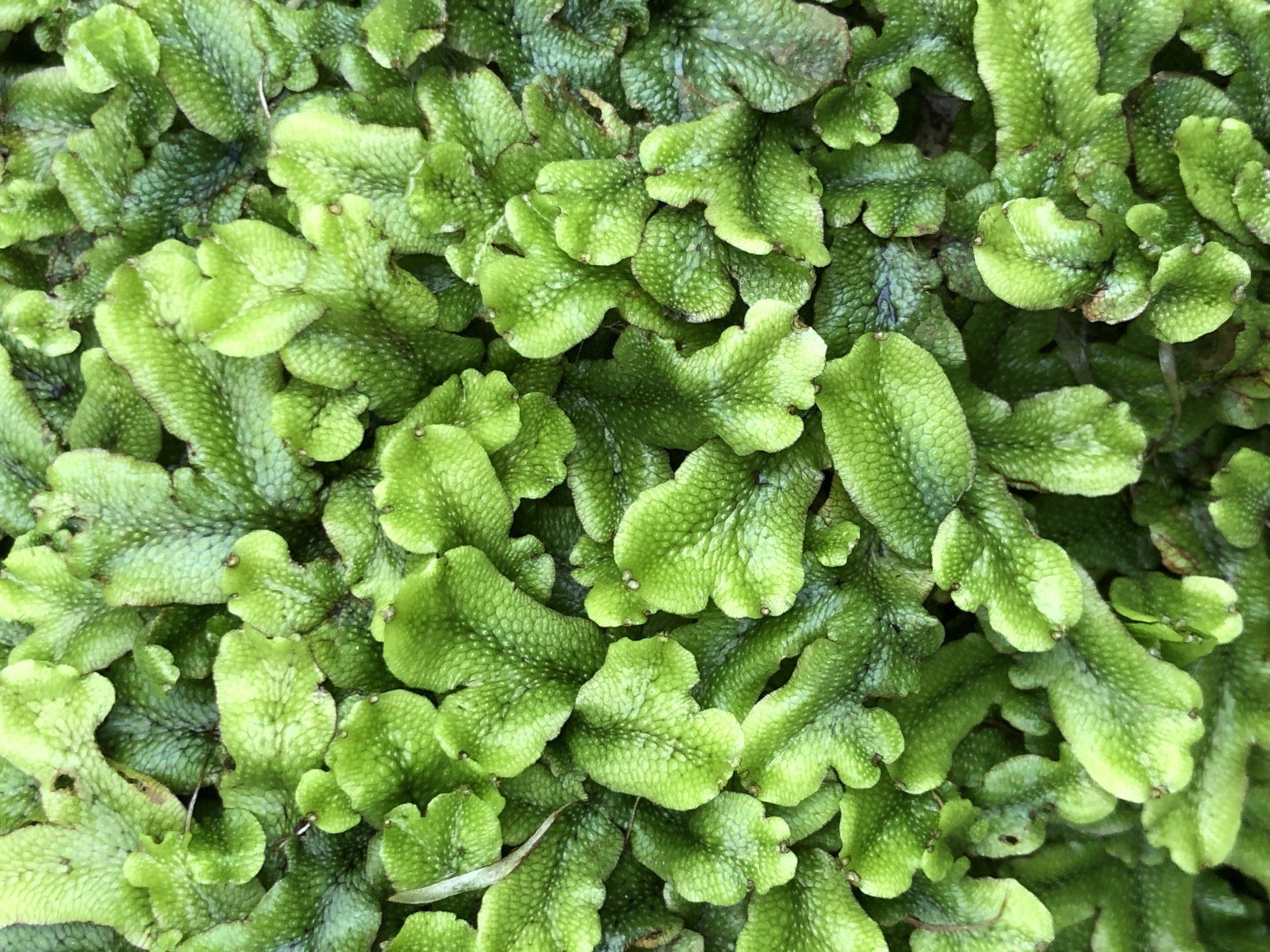
Conocephalum-conicum-(L.)-Dumort.-452556.jpg from: https://www.biodiversidadvirtual.org/herbarium/Conocephalum-conicum-(L.)-Dumort.-img452556.html
Introduction
The world of mosses is a fascinating one, filled with tiny, unassuming plants that often go unnoticed by the casual observer. Among these mosses is the

Conocephalum-conicum-(L.)-Dumort.-452557.jpg from: https://www.biodiversidadvirtual.org/herbarium/Conocephalum-conicum-(L.)-Dumort.-img452557.html
Conocephalum conicum (L.) Dumort., a member of the Conocephalaceae family, also commonly known as Conocephalum. This moss may be small, but it plays a significant role in the ecosystems it inhabits, and its unique characteristics make it a captivating subject for enthusiasts.

Conocephalum-1024×768.jpeg from: https://www.botanic.cam.ac.uk/education-learning/trails/plant-evolution/conocephalum-conicum/conocephalum/
Background
Before we delve into the details of Conocephalum conicum (L.) Dumort., it’s essential to understand its place in the plant kingdom. This moss belongs to the division Marchantiophyta, also known as liverworts, which are a group of non-vascular plants that are closely related to mosses and hornworts. The Marchantiopsida class, to which

Conocephalum_DSCN0404.jpg from: http://blogs.ubc.ca/biology321/?page_id=3358
Conocephalum belongs, is characterized by its distinctive thalloid (ribbon-like) growth form.
Main Content
Morphology and Identification
Conocephalum conicum (L.) Dumort.

799a5730-25a1-4869-8cd0-4d19bbcd840b.jpg from: https://www.scirp.org/html/15-2600409_22194.htm
is a thalloid liverwort that forms flat, green mats on the ground or on decaying logs. Its thallus (plant body) is ribbon-like, with a distinct midrib running along its length. The thallus can grow up to 10 cm long and is often forked or branched. One of the most distinctive features of this moss is the presence of conical structures called archegoniophores, which are reproductive structures that bear the female reproductive organs.
Global Distribution and Habitat
Conocephalum conicum (L.) Dumort. is widely distributed across the globe, found on every continent except Antarctica. It thrives in moist, shaded environments, such as forests, stream banks, and rocky areas. This moss prefers acidic soils and is often found growing in association with other bryophytes (mosses and liverworts).
Ecological Roles and Adaptations
Despite its small size, Conocephalum conicum (L.) Dumort. plays a crucial role in its ecosystem. It helps to retain moisture in the soil, preventing erosion and providing a suitable habitat for other small organisms. Additionally, this moss is an important food source for various invertebrates, such as snails and insects.
One of the remarkable adaptations of Conocephalum conicum (L.) Dumort. is its ability to reproduce both sexually and asexually. The conical archegoniophores produce spores for sexual reproduction, while the thallus can also produce specialized structures called gemmae, which allow for asexual reproduction.
Case Studies/Examples
In a study conducted in the Pacific Northwest region of North America, researchers found that Conocephalum conicum (L.) Dumort. played a vital role in the recovery of forest ecosystems after disturbances such as logging or fire. The moss’s ability to quickly colonize disturbed areas and retain moisture in the soil facilitated the growth of other plant species, contributing to the overall restoration of the ecosystem.
Technical Table

31587112.jpg from: https://observations.be/photos/31587112/

Conocephalum-conicum-(L.)-Dumort.-492066.jpg from: https://www.biodiversidadvirtual.org/herbarium/Conocephalum-conicum-(L.)-Dumort.-img492066.html

25105699.jpg from: https://observations.be/photos/25105699/
| Characteristic | Description |
|---|---|
| Scientific Name | Conocephalum conicum (L.) Dumort. |
| Family | Conocephalaceae |
| Division | Marchantiophyta
 Conocephalum-conicum-(L.)-Dumort.-448642.sm.jpg from: https://www.biodiversidadvirtual.org/herbarium/BFI-Conocephalum-conicum-(L.)-Dumort.-cat11813.html |
| Class | Marchantiopsida
 Conocephalum-1920×1440.jpeg from: https://www.botanic.cam.ac.uk/education-learning/trails/plant-evolution/conocephalum-conicum/ |
| Growth Form | Thalloid liverwort |
| Thallus Length | Up to 10 cm |
| Reproductive Structures | Conical archegoniophores (female), antheridia (male) |
| Reproduction | Sexual (spores) and asexual (gemmae) |
| Habitat | Moist, shaded environments (forests, stream banks, rocky areas) |
| Distribution | Widespread globally, except Antarctica |
Conclusion
Conocephalum conicum (L.) Dumort., a humble yet remarkable moss, serves as a testament to the incredible diversity and importance of bryophytes in our ecosystems. Its unique morphology, adaptations, and ecological roles make it a fascinating subject for enthusiasts and researchers alike. As we continue to explore and appreciate the wonders of the natural world, perhaps we can take a moment to appreciate the unassuming beauty and significance of this tiny, yet mighty moss.
Leave us with a thought-provoking question: In a world where we often overlook the smallest of creatures, what other hidden marvels might we be missing, and how can we cultivate a deeper appreciation for the intricate web of life that surrounds us?